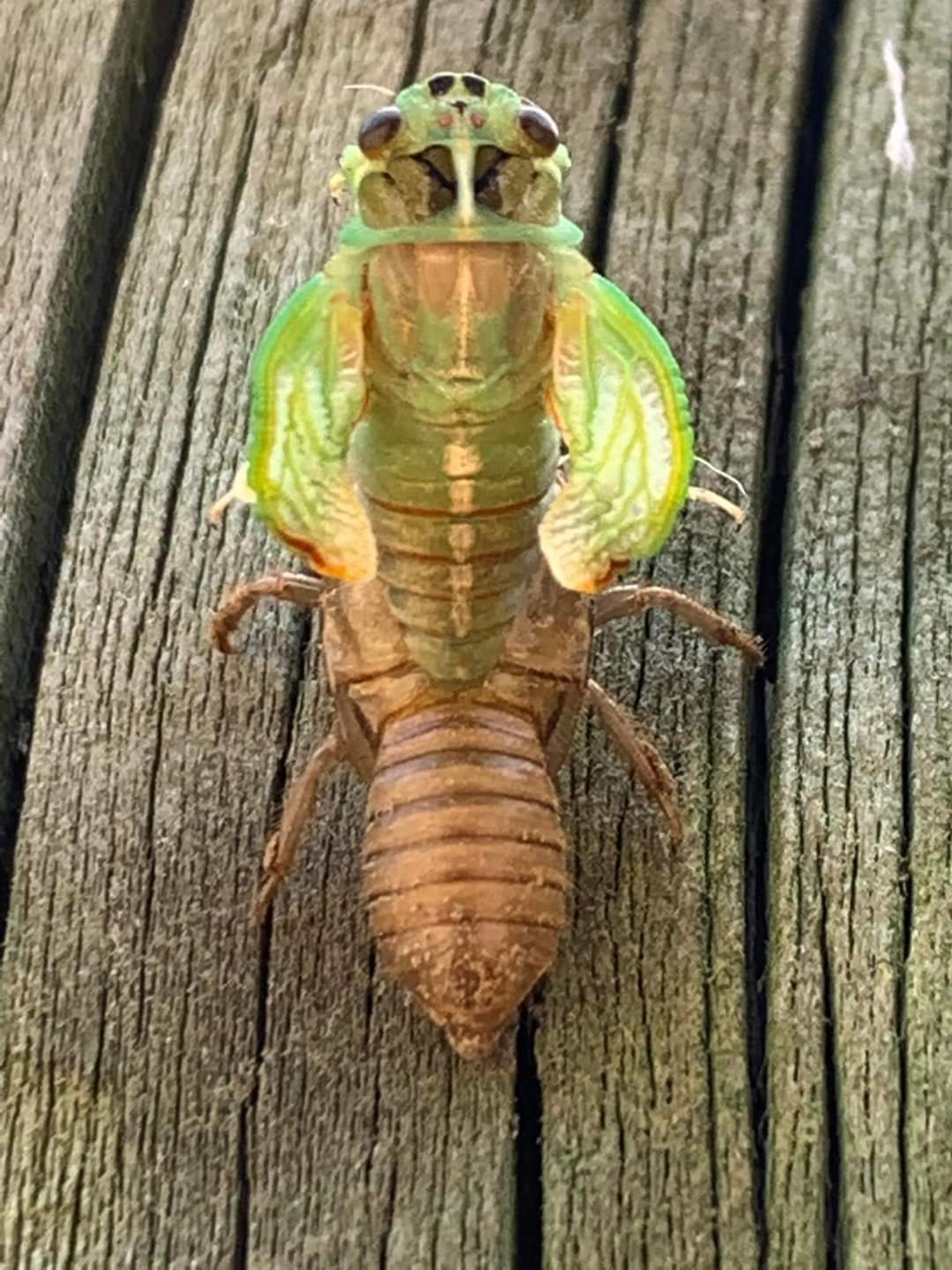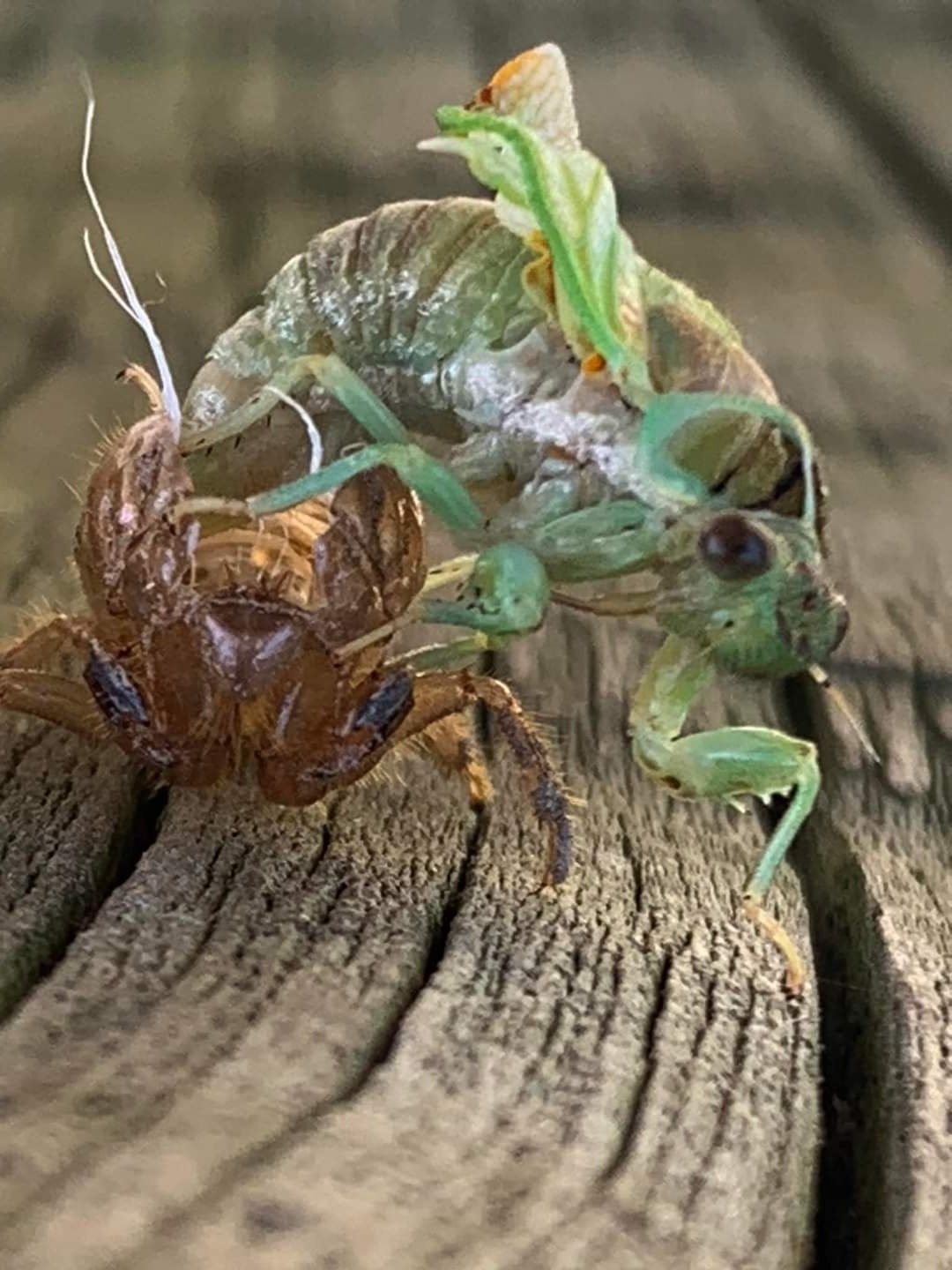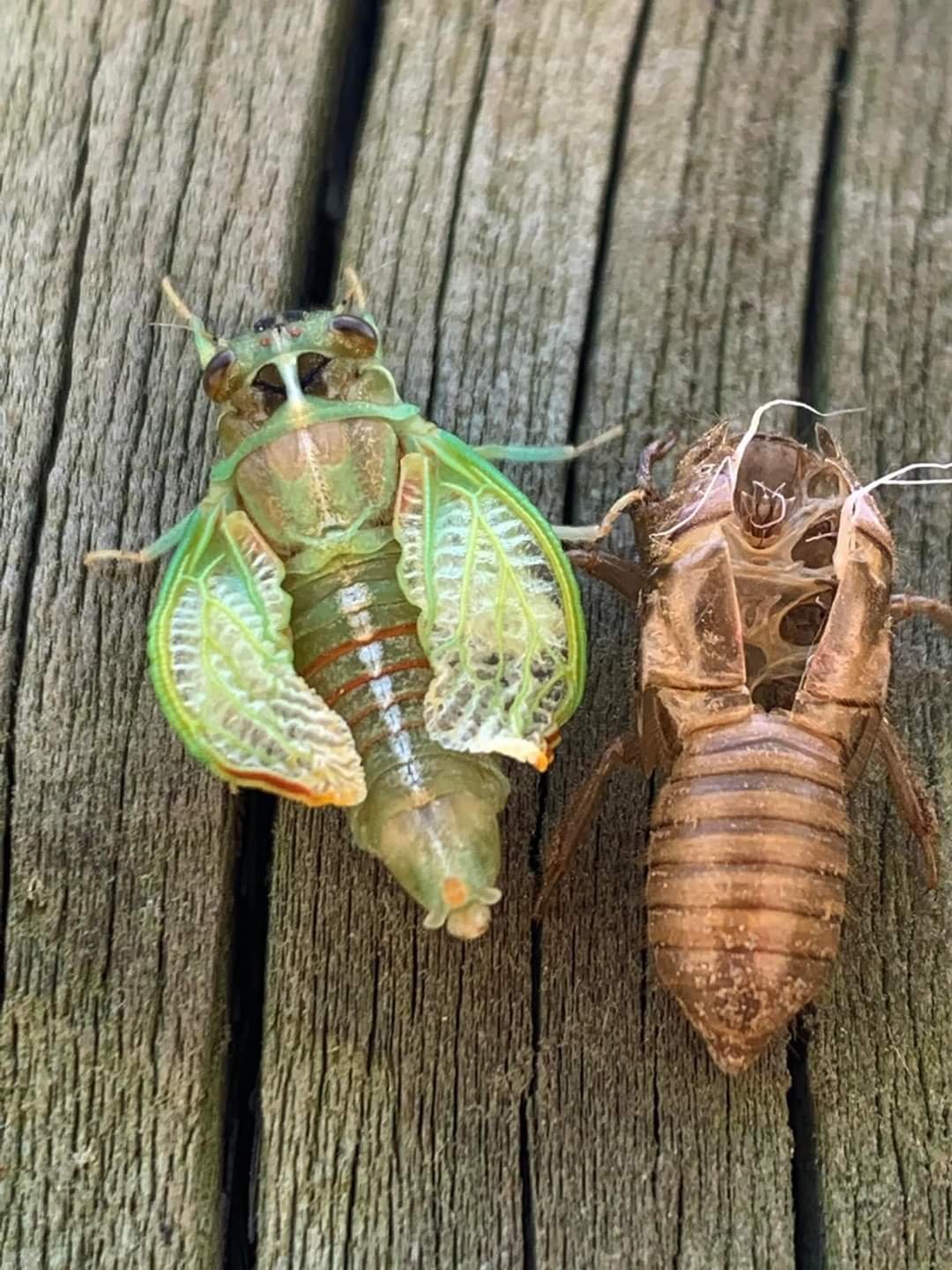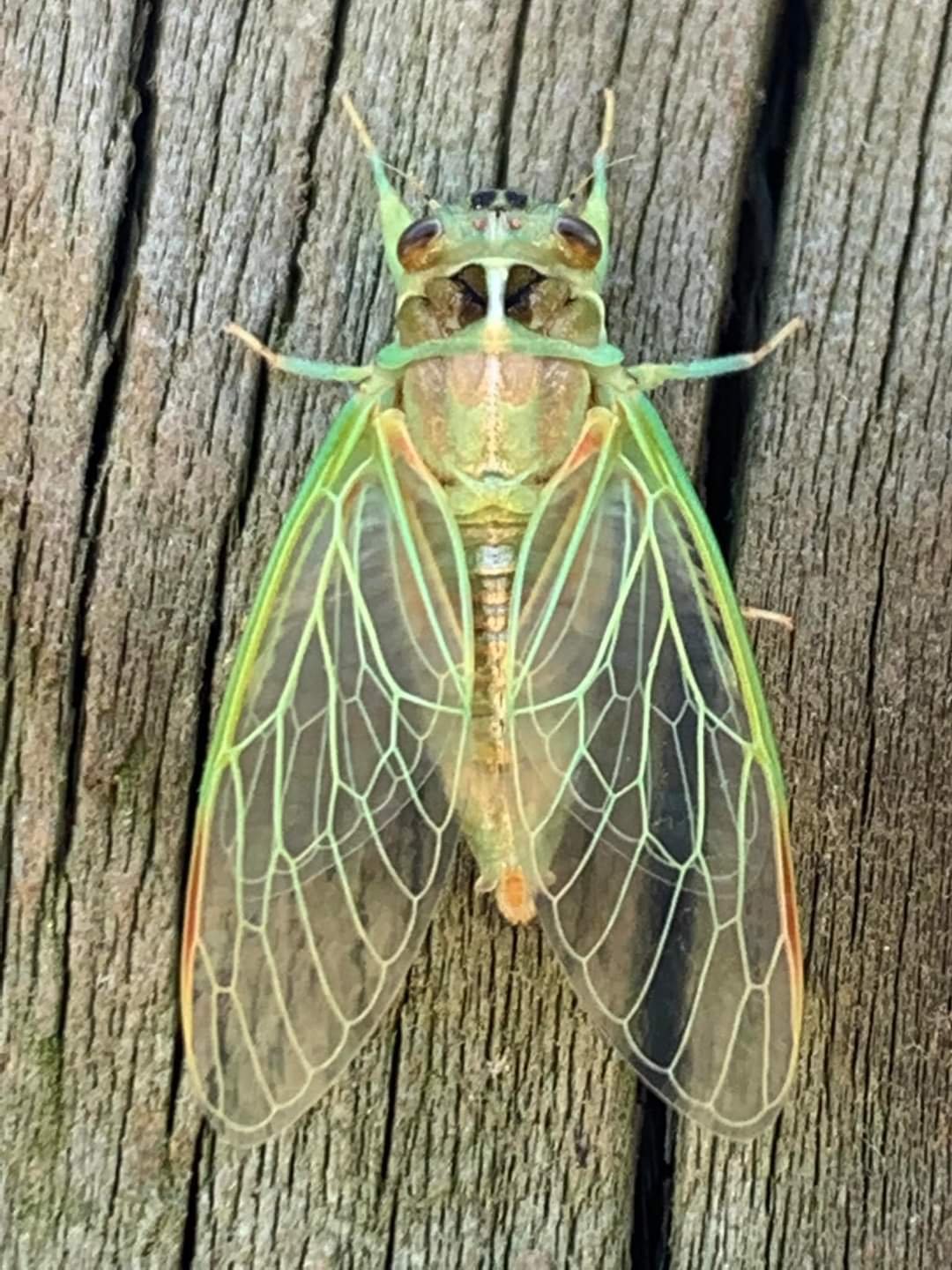Look for signs of cicadas
You’ve probably heard cicadas in the summer time, making lots of screechy noises. You may have seen them flying around, but did you know that most of their life is spent in darkness, deep underground? You may have found cicada shells stuck to trees in the summer time, but do you know how, or why, those shells are there? Read on to learn all about the fascinating life cycle of the cicada. Then head out and look for signs of these incredible insects!
The female cicada uses the long ovipositor at the end of her body to lay eggs in little cuts in twigs, branches, or grass stems. You might spot these little cuts on branches if you look carefully. You can see some that we found in the photo below. Click HERE to see more photos of branch damage caused by cicadas laying eggs.
Marks made by cicadas laying eggs in the branches of a tree. *Photo by Rachel Thompson
Check out all of the cicada shells that we found on this tree on Mt Kakepuku, near Te Awamutu!
The little cream coloured nymphs emerge from the eggs and drop to the ground. They have no wings, but do have two claw-like forelegs and four smaller legs. After falling on the ground, they look for cracks and crevices, then burrow deep into the soil using their strong, digging forelegs. They may dig down as deep as one metre, but usually dig down to 40 centimetres. New Zealand cicadas live underground for 3-5 years, shedding their skin as they grow. They drink sap from the roots of plants.
When the nymph is ready to emerge from the ground, it digs its way up to the surface. At night, while it is safely hidden in the dark, it comes out of the ground and climbs a tree to moult its final skin. Under this skin it has wings, crumpled and soft. After splitting its skin and emerging, it pumps up its wings and waits for them to dry and harden. By morning, it is ready to fly away and find a mate. You may hear the male cicada making a screechy noise to attract a mate (watch this video to see how the sound is made). Sadly, cicadas only live for 2-4 weeks above the ground, just long enough to find a mate, and for the female to lay eggs, then the cycle can start again.
Did you know that wasps are a terrible predator for cicadas? Another predator is actually a fungi that takes over their body, eventually killing them and leaving them looking like they are covered in icing sugar. Read more about these things and other fun facts in this great article by Predator Free NZ.
Go on a hunt for signs of cicadas! Can you find any cicada skins on trees near you? See if you can spot herringbone shaped grooves in branches where eggs have been laid by a cicada.
If you are really lucky, you might spot a cicada emerging from its shell, looking like an alien creature! Check out these awesome photos taken by Brendon Barlow, who managed to capture the whole process. We think they are amazing photos!
Did you know that a 10 year old New Zealand boy wrote a guidebook about the cicadas of New Zealand? How cool is that!? Click HERE to go to his website, read all about this inspiring young man, and buy his book! See a video of him talking about researching and writing his book below:








